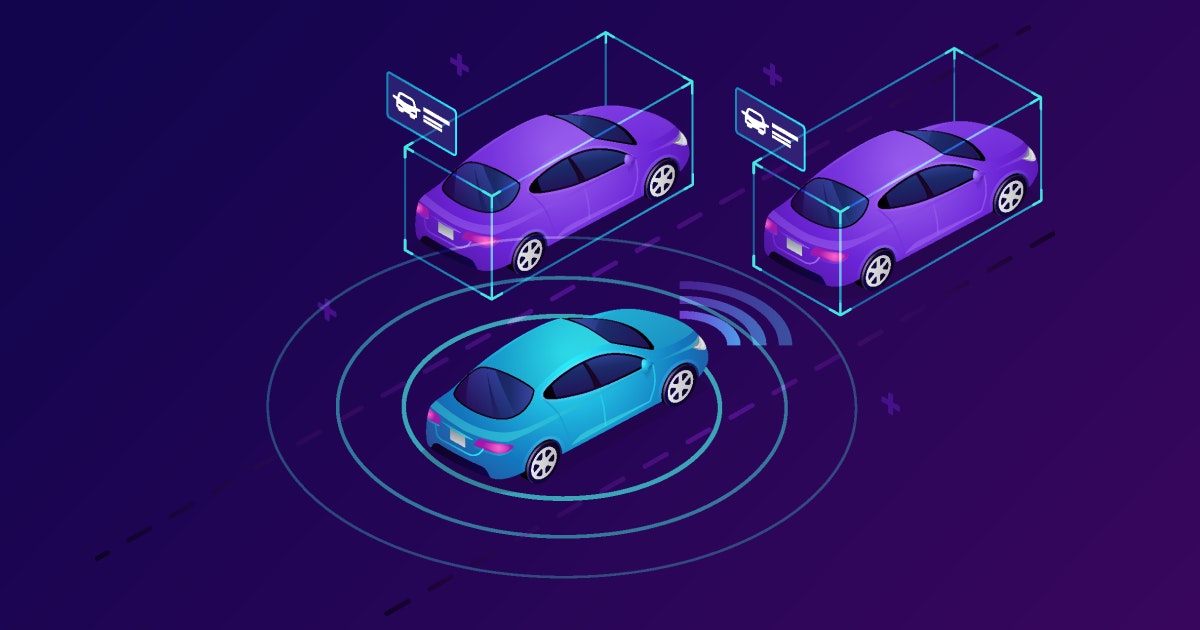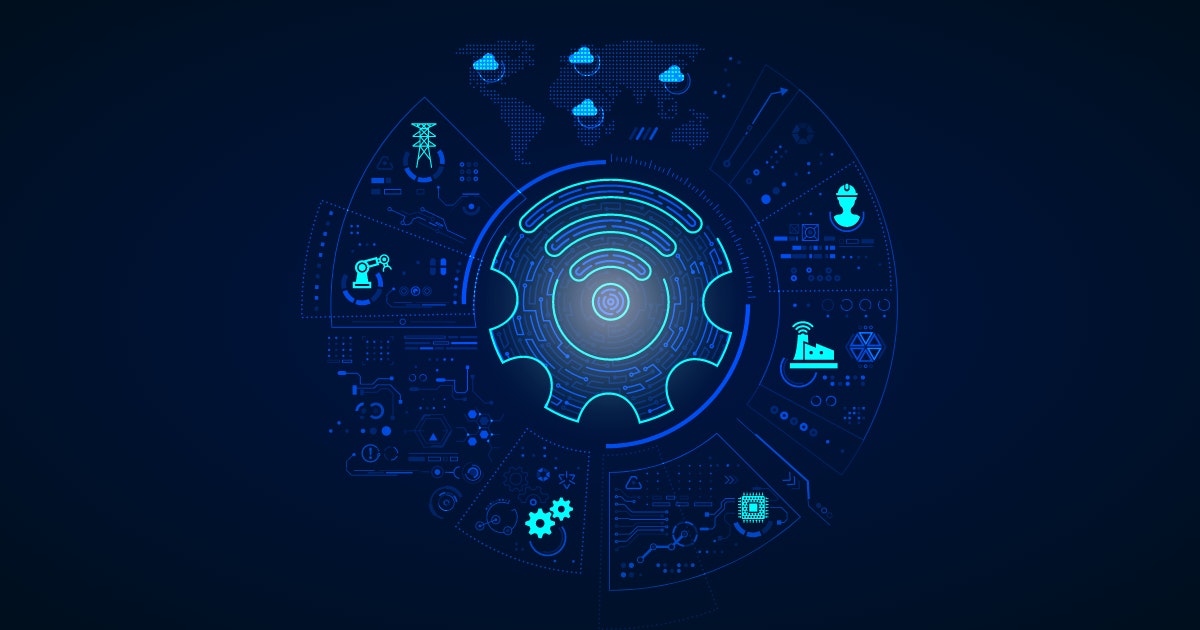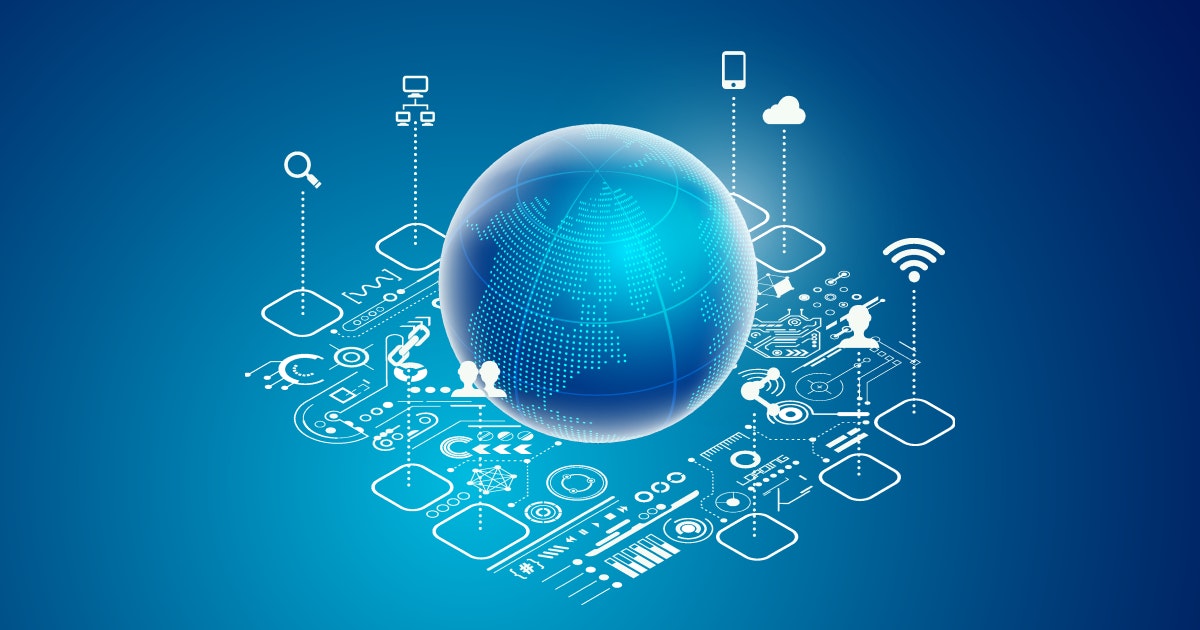IoT in Automotive Market?
The Internet of Things or IoT is an ecosystem of connected devices that exchange data over a wired or wireless network. IoT is known to strengthen the foundation of a digital-first world by integrating cloud and edge computing to establish seamless connectivity.
Gartner predicts the penetration of over 15 billion Internet of Things devices into the enterprise infrastructure by 2029. So far, IoT has managed to carve a niche for itself in various sectors — be it manufacturing or health. The automotive industry is no exception either.
IoT-connected vehicles can redefine mobility. IoT-enabled systems can improve safety, fuel efficiency, and navigation. This is done through real-time data sharing. Automakers integrate IoT in automotive technologies to develop smart solutions. This includes predictive maintenance to autonomous driving support.
The state of IoT in automotive industry
Although the use of IoT in the automotive industry is still in its early phase, it is gaining momentum with each passing day with the rise in adoption of smart devices. Futuristic vehicles can communicate with each other thanks to internet connectivity, as well as the driver using IoT technology.
Next-generation vehicles cater to buyer needs with futuristic features like remote control via smartphones or customized seat adjustments on board. The performance of these vehicles is based on information collected in real-time.
IoT was introduced in its raw form in the automotive industry along with the advent of the Internet. Since 1994, computer diagnostics systems have been embedded into cars.
In 2000, USB and Bluetooth communication channels were added for more seamless integration between car systems. Entertainment or safety features were enhanced by implementing these. The influence of the Internet of Things over the automotive industry has grown over years.
Here are a few stats:
- It is estimated to grow up to $740 billion by 2025.
- Vehicle autonomy will reach escape velocity by 2023.
- By the same year, 70% of all vehicles will be connected to the internet.
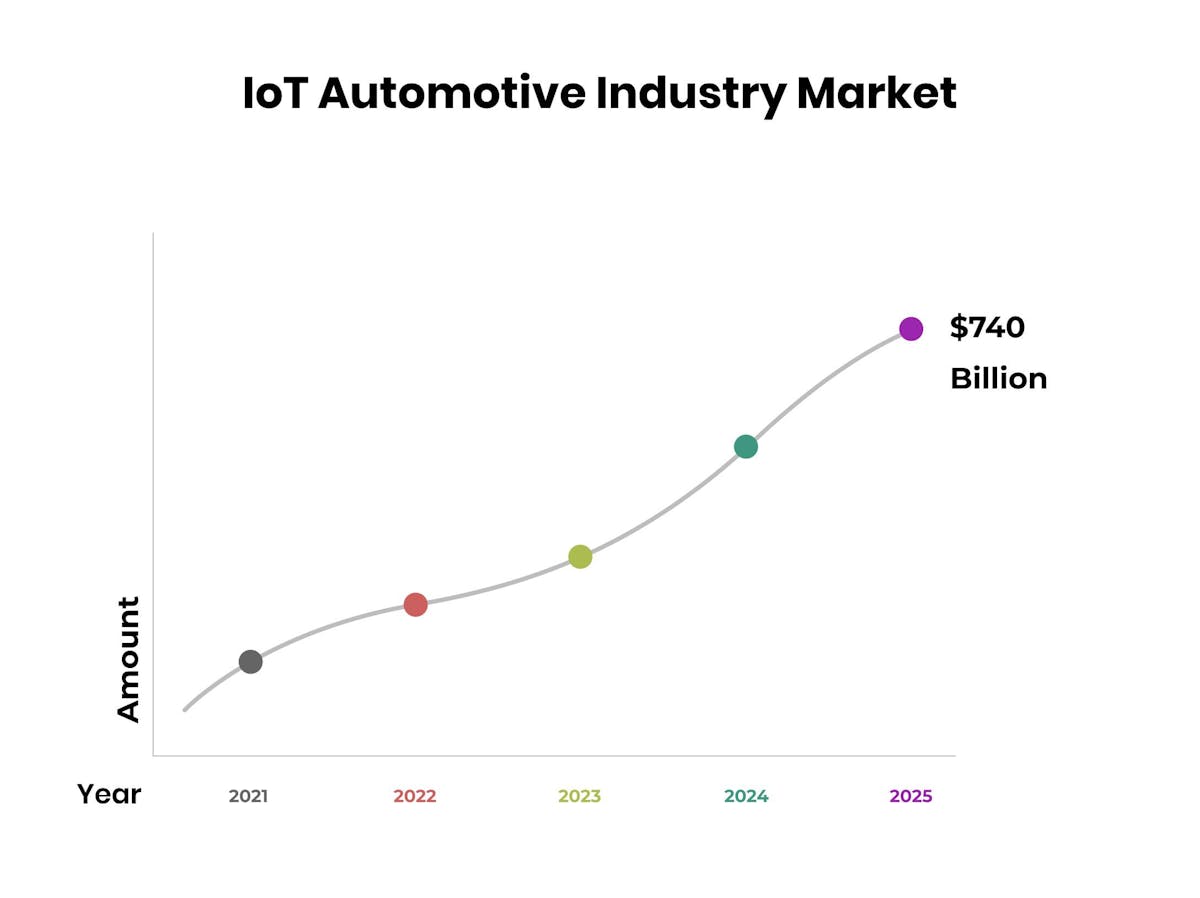
The role of applications of IoT in the automotive industry
This industry is embracing new technologies that are going to revolutionize the usage and management of fleets. Implementing IoT-enabled smart devices and external sensors coupled with edge computing is disrupting the way the automotive industry operates.
Mobile devices enabled through AI-based applications and cloud computing keep you constantly connected with your vehicles. You can keep track of them, improve their performance, reduce downtime with predictive maintenance solutions, and achieve fuel efficiency.
Accelerate Your Auto Tech with Custom IoT Integration!
Explore Solutions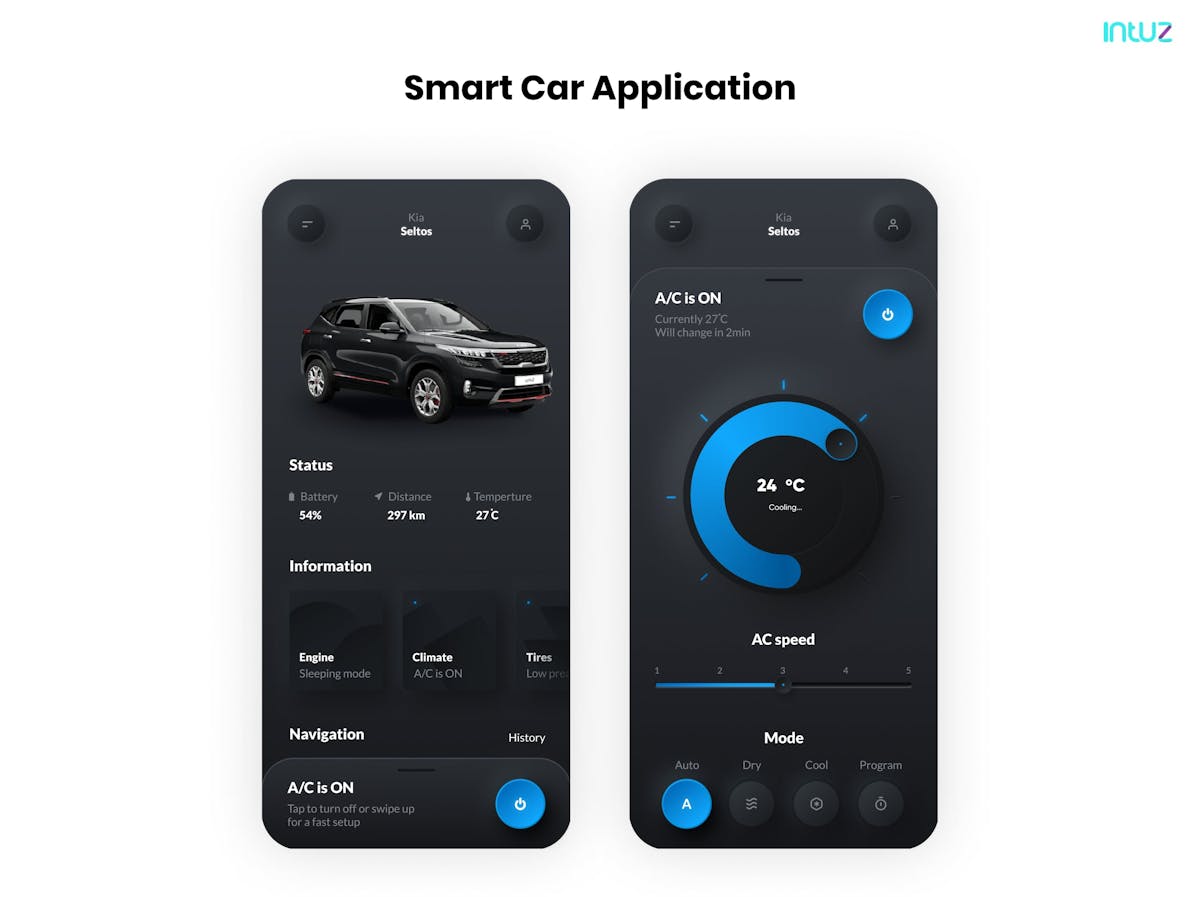
Practical Applications of Automotive IoT in the Industry
The IoT applications in the automotive industry have opened doors to limitless opportunities. They can help improve design, performance and reduce cost while ensuring quality control of the highest level.
Industry 4.0 has paved the way for the wider implementation of IoT by combining AI with networking technology. It allows cars to communicate wirelessly amongst themselves as well. The most common applications of IoT in the automotive sector are:
1. Fleet management
Fleet operations can be optimised using automotive IoT. Real-time tracking of fuel usage, tire pressure, and engine performance is done via sensors. IoT in automotive can help monitor routes, reduce downtime, and cut operational costs. Additionally, advanced GPS and telematics keep vehicles efficient and safe to drive.
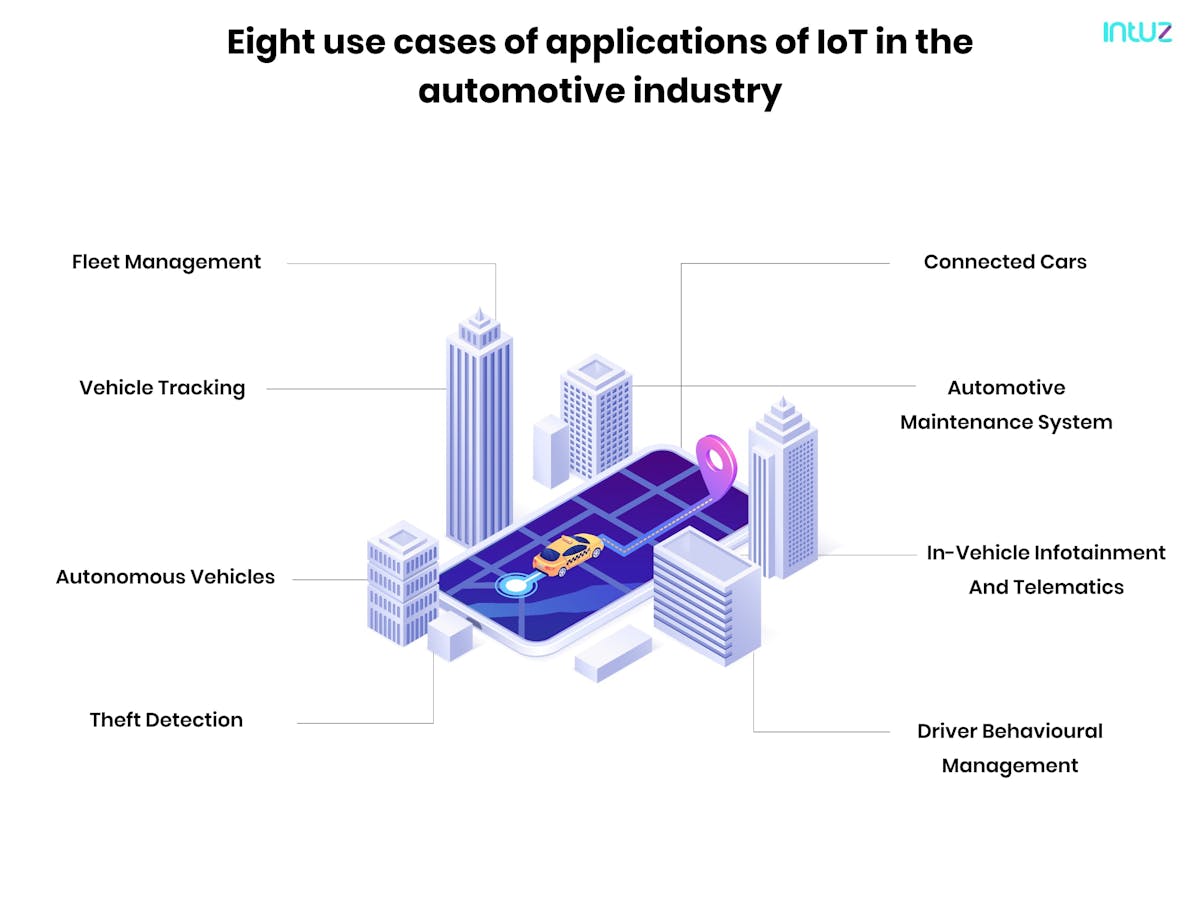
2. Vehicle tracking
Fleet operators and owners use IoT to get a holistic view of their inventory. They can track the location of their vehicles as they move freight from one destination to the other. Real-time information sharing allows them to foresee changes in weather conditions or traffic congestion.
It helps in route optimization to ensure just-in-time delivery. Supported by GPS-enabled trackers, these internet connected services can communicate with their drivers about changes in route and delivery timeline.
Geofencing ensures each vehicle travels only within pre-set geographic boundaries to prevent any route violations.
3. Connected cars
Vehicles that stay connected to the internet and other IoT devices inside or around them are referred to as connected cars and one common use case of IoT is that it is used to track the vehicle's location.
a. Cellular vehicle to everything (C-V2X) technology
It is set to revolutionize the way automobiles interact with our world. It provides highly reliable and actionable information that can keep drivers safer on roads as well as improve autonomous driving capabilities. Being an integral part of a connected mobility ecosystem, the technology is set to provide vehicles with 360-degree awareness of their surroundings. Transportation Logistics Management (TLM) is bound to improve with the deployment of C-V2X, as it makes predicting traffic patterns easier and provides greater safety.
b. Vehicle-to-Vehicle (V2V) communication
These systems enable car owners to share information about their surroundings with other car owners. The technology relies on the Dedicated Short Range Communications (DSRC) frequencies and will work wirelessly.
As a part of this mesh network, each car will become its own node by capturing signals from nearby vehicles and sync data seamlessly. Any change in vehicle-to-vehicle systems can be detected instantly across every device connected within the range, including traffic lights or road sensors.
c. Vehicle-to-Infrastructure (V2I) communication
This takes place over Intelligent Transportation Systems (ITS). It will facilitate the bidirectional exchange of information between the vehicle and the road infrastructure. That is what an IoT app development company can help you with.
Vehicle-generated data will be gathered and transferred wirelessly among sensors installed on the road infrastructure i.e. cameras, traffic lights, streetlights, road signs, lane markers, parking meters, and other infotainment systems.
The broadcasted data can be used to ensure driving within speed limits to avoid accidents and change routes based on modifications in weather conditions.
d. Vehicle-to-Pedestrians (V2P) communication
These systems detect pedestrian movements like people walking, children playing, wheelchairs, bicycles, and strollers. A vehicle-to-pedestrian smart sensor could be implemented to create awareness about the presence of people on the sidewalks.
In-vehicle infotainment systems that work on local networks powered by LiDAR technology can be used to raise collision warnings upon detecting pedestrians. Also, 360-degree cameras can be deployed to detect proximity and raise blind spot warnings.
Though these connections would require a new generation of IoT-based applications and mobile apps and in-vehicle infotainment systems, they support data streaming capabilities easily.
e. Vehicle-to-Networks (V2N)
Such infotainment systems use DSRC standards to interact with other vehicles as well as the road infrastructure. With this level of connectivity, vehicles will also be considered as a “device.” DSRC will help them in accessing data over the mobile network, LTE, and 5G infrastructure.
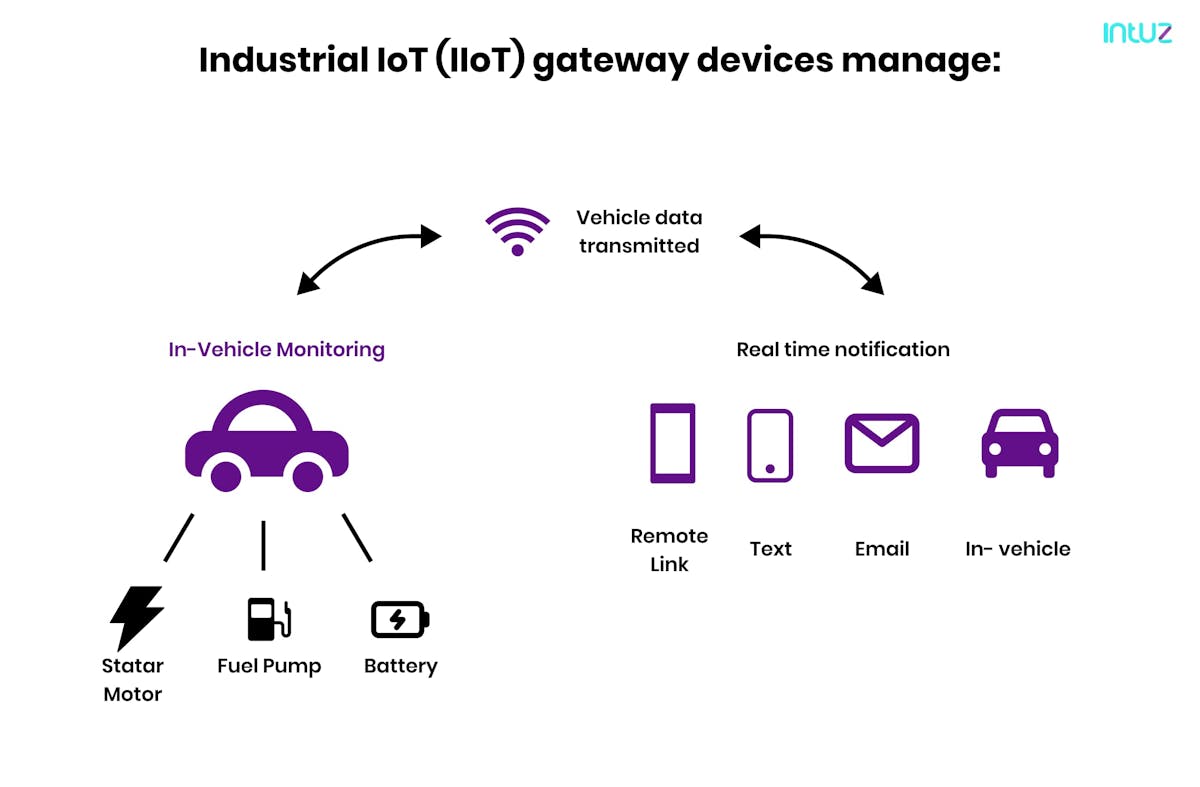
4. Automotive maintenance system
IoT automotive maintenance systems help fleet owners take necessary steps to prevent the sudden breakdown of their vehicles. The system alerts drivers about upcoming maintenance requirements and probable malfunctions in advance.
It helps avoid accidents and costly repairs while on their journey. Using predictive maintenance ensures you can be assured of the vehicle’s performance beforehand and reduce downtime.
IoT-enabled automobile diagnostics solutions provide fleet owners with precise information and help with adherence to delivery timelines.
5. Autonomous vehicles
The future of driving is predicted to be autonomous vehicles. It is still under development, though the implementation of IoT-infused semi-autonomous cars has already been done in the industry. These vehicles take on-spot decisions while partly controlling vehicle operations.
Drivers get support from these in vehicle infotainment systems in undertaking various activities such as parking or lane changing. The pace of developing autonomous vehicles for commercial use is accelerating as the technology will revolutionize how people commute and will also be beneficial for the environment.
6. In-vehicle infotainment and telematics
Telematics and IoT have revolutionized the automotive industry with in-car Wi-Fi capabilities. Telemetry refers to data transmission from a computer or device for remote monitoring, control, and so on, while IoT devices run on electric power and source data via sensors.
The 4G LTE connection enables automobiles equipped with these new technologies to enjoy functions such as video streaming, calling authorities in case of accidents, or even alert owner’s in case of theft. What a feat in connected car solutions.
7. Theft detection during the maintenance and manufacturing processes
The need to monitor the state of the equipment of automotive manufacturers has been realized in recent years. RFID tags are able to determine the parts that were stolen and the time of the incident. IoT implementation allows tracking of each part in real-time.
The manufacturing process in the automobile industry includes huge investment, therefore, keeping track of potential losses or thefts ensures the assets do not go missing and the process is not delayed. GPS monitoring systems having Google maps will help in tracking the person who committed theft.
8. Driver behavioural management
IoT in automotive enhances road safety. Automotive-IoT can track driver performance. Sudden braking, rapid acceleration as well as erratic steering can be detected by IoT. This data can help businesses implement training programs and enforce safer driving habits. It can send instant alerts for reckless driving.
9. Predictive maintenance
IoT in automotive reduces unexpected failures. This can extend vehicle lifespan and lower repair costs. Predictive maintenance can also be enabled by automotive IoT. This happens by continuously monitoring vehicle health. IoT sensors can track engine performance, battery levels, brake conditions, and oil quality. When an issue is detected, the system sends alerts. This allows timely repairs before breakdowns occur.
Benefits of IoT in Automotive Industry
Improved Safety Measures
Road safety improves when drivers get access to real-time insights. For example, IoT-powered alerts can warn about blind spots, lane departures, and even potential collisions. Features like adaptive cruise control, emergency braking, and smart airbags are also becoming a common sight. In summation, IoT-connected vehicles can respond to hazards faster.
Streamlined Car Production
IoT-driven automation also benefits manufacturing plants. To begin with, it can reduce downtime and waste. Smart sensors also track equipment performance and end up preventing unexpected failures. Predictive analytics is more geared towards precaution. It identifies issues before they disrupt production. That’s how manufacturers can speed up production of high-quality vehicles
Transportation takes the eco-friendly route with IoT-connected car technology. For example, IoT sensors can track engine health, and optimise fuel consumption. It can even give tips for efficient driving. IoT in automotive also supports electric vehicle management. It can improve battery performance, and charging schedules can be streamlined.
Tailored User Experience
Personalised vehicle settings are now a reality with IoT integration. AI-powered assistants can recognise driver habits, adjust climate control, seats, and entertainment preferences. This is done without manual intervention. IoT in cars enables seamless smartphone pairing for hands-free navigation, music, and calls. Voice commands and gesture controls make the driving experience smoother and more intuitive.
IoT-Based Monitoring And Speed Control Of Automotive Motors!
Read NowThe future of IoT in the automotive industry
IoT is unlocking new value for all involved parties in the automobile industry and as it continues to evolve, it is steering towards a paradigm shift. By integrating new technologies such as AI and ML into IoT-backed networks, automobile manufacturers can develop better vehicle connectivity solutions.
The popular trends driving change are over-the-air software updates. These solutions will be capable of data analytics for preventive maintenance.
Enhanced Connectivity with 5G Networks
The world has gone from 2G to 5G in a matter of few years. Technologies have adapted accordingly. With automotive IoT leveraging 5G, vehicles will be able to unlock new features. For example, real-time traffic updates, road hazard alerts, and sensor data can be shared more efficiently. It will definitely forge better vehicle-to-vehicle (V2V) and vehicle-to-infrastructure (V2I) communication.
Advancing Car-Sharing and Ride-Sharing Services
Shared mobility is evolving as IoT makes vehicle tracking, maintenance, and smart payments more seamless. With IoT in automotive, ride-sharing platforms can monitor driver behaviour, improve route optimisation, and automate fleet servicing, delivering a smoother user experience.
Widespread Adoption of OTA Updates
Manual software updates are almost a thing of the past. IoT-powered over-the-air (OTA) technology has now entered the arena with an edge. It allows manufacturers to deploy performance upgrades, bug fixes, and security patches. All of these can be done remotely. With IoT in cars, software enhancements can be implemented right at home, rather than a service center.
Strengthening Vehicle Cybersecurity
More and more vehicles are taking the digital route in recent years. It is certain that Internet of things in cars is here to stay. This trajectory makes cybersecurity a top priority for vehicle manufacturers. Some important use cases include AI-driven threat detection and encrypted communication channels. IOT in cars will rely on multi-layered security protocols. It will keep unauthorised access and cyber threats at bay.
In addition to these innovations, the V2X connectivity is set to allow vehicles to drive themselves. These connected cars are capable of communicating through the deployment of vehicular electronics, embedded systems, and cloud connectivity.
Book a Free 45-minute Consultation with Our IoT Experts Today! Get a customized roadmap and strategies to leverage IoT for the automotive business.
